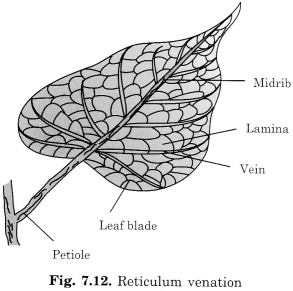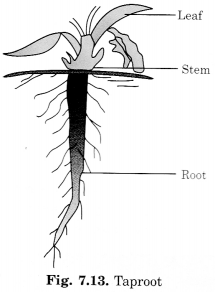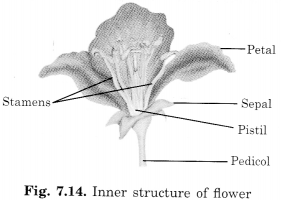NCERT Solutions | Class 6 Science Chapter 7 | Getting to Know Plants

CBSE Solutions | Science Class 6
Check the below NCERT Solutions for Class 6 Science Chapter 7 Getting to Know Plants Pdf free download. NCERT Solutions Class 6 Science were prepared based on the latest exam pattern. We have Provided Getting to Know Plants Class 6 Science NCERT Solutions to help students understand the concept very well.
NCERT | Class 6 Science
| Book: | National Council of Educational Research and Training (NCERT) |
|---|---|
| Board: | Central Board of Secondary Education (CBSE) |
| Class: | 6th |
| Subject: | Science |
| Chapter: | 7 |
| Chapters Name: | Getting to Know Plants |
| Medium: | English |
Getting to Know Plants | Class 6 Science | NCERT Books Solutions
NCERT TEXTBOOK EXERCISES
ncert science class 6 Chapter 7, Question 1.
Correct the following statements and rewrite them in your notebook :(a) Stem absorbs water and minerals from the soil.
cbse science class 6 solutions, Answer :
Roots absorb water and minerals from the soil.(b) Leaves hold the plant upright.
ncert class 6 science Chapter 7 question answer, Answer :
The stem holds the plant upright.(c) Roots conduct water to the leaves.
cbse science class 6 solutions, Answer :
Stem conducts water to the leaves.(d) The number of petals and sepals in a flower is always equal.
ncert class 6 science Chapter 7 question answer, Answer :
The statement is not correct(e) If the sepals of a flower are joined together its petals are also joined.
cbse science class 6 solutions, Answer :
The statement is correct.(f) If the petals of a flower are joined together, then the pistil is joined to the petal.
ncert class 6 science Chapter 7 question answer, Answer :
The statement is correct.ncert science class 6 pdf free download, Question 2.
Draw a leaf, a taproot, and a flower, you have studied for Table 7.3 (NCERT Book, Page 61).cbse science class 6 solutions, Answer :
(a) Leaf
(b) Taproot

(c) Flower

ncert science class 6 solutions, Question 3.
Can you find a plant in your house or in your neighbourhood, which has a long but weak stem? Write its name. In which category will you place it?ncert class 6 science Chapter 7 question answer, Answer :
Yes, money plant. It belongs to creepers.ncert science class 6 textbook pdf, Question 4.
What is the function of a stem?cbse science class 6 solutions, Answer :
A stem in a plant performs the following functions:- It bears leaves, buds, flowers, fruits, etc.
- It conducts water from roots to the leaves and other parts and food from leaves to the roots.
- In some plants, it is also modified to store food.
- It upholds the plant upright.
NCERT Solutions for Class 6 Science, Question 5.
Which of the following leaves have reticulate venation? Wheat, tulsi, maize, grass, coriander (dhania), China rose.ncert class 6 science Chapter 7 question answer, Answer :
Leaves having reticulate venation are Tulsi, Coriander (dhania), China rose.NCERT Solutions for Class 6 Science Chapter 7, Question 6.
If a plant has a fibrous root, what type of venation do its leaves have?cbse science class 6 solutions, Answer :
Parallel’venation.science class 6 Chapter 7, Question 7.
If a plant has leaves with reticulate venation, what kind of roots will it have?ncert class 6 science Chapter 7 question answer, Answer :
If a plant has leaves with reticulate venation then it will have taproots.science class 6 pdf, Question 8.
Is it possible for you to find out whether a plant has taproot or fibrous roots by looking at the impression of its leaf on a sheet of paper?cbse science class 6 solutions, Answer :
We cannot exactly recognize a leaf without seeing it. However, we might get some idea about the leaf by touching and smelling.cbse class 6 science book, Question 9.
Write the names of the parts of a flower.ncert class 6 science Chapter 7 question answer, Answer :
Sepals, petals, stamen, pistil.cbse class 6 science Chapter 7, Question 10.
From the following plants, which of them have flowers? Grass, maize, wheat, chilli, tomato, tulsi, piped, shisham, banyan, mango, Jamun, guava, pomegranate, papaya, banana, lemon, sugarcane, potato, groundnut.cbse science class 6 solutions, Answer :
| S.No | Name of the plant | Whether seen | Whether have flowers | |||
| Yes | No | |||||
| 1. | Grass | Yes | ✓ | |||
| 2. | Maize | Yes | ✓ | |||
| 3. | Wheat | Yes | ✓ | |||
| 4. | Chilli | Yes | ✓ | |||
| 5. | Tomato | Yes | ✓ | |||
| 6. | Tulsi | Yes | ✓ | |||
| 7. | Pipal | Yes | ✓ | |||
| 8. | Shisham | Yes | ✓ | |||
| 9. | Banyan | Yes | ✓ | |||
| 10. | Mango | Yes | ✓ | |||
| 11. | Jamun | Yes | ✓ | |||
| 12. | Guava | Yes | ✓ | |||
| 13. | Pomegranate | Yes | ✓ | |||
| 14. | Papaya | Yes | ✓ | |||
| 15. | Banana | Yes | ✓ | |||
| 16. | Lemon | Yes | ✓ | |||
| 17. | Sugarcane | Yes | ✓ | |||
| 18. | Potato | Yes | ✓ | |||
| 19. | Groundnut | Yes | ✓ | |||
cbse class 6 science notes pdf, Question 11.
Name the part of the plant which produces its food. Name this process.ncert class 6 science Chapter 7 question answer, Answer :
Leaves of the plant produce food by the process of photosynthesis.cbse class 6 science syllabus pdf, Question 12.
In which part of a flower in which one has joined sepals and the other has separate sepals.cbse science class 6 solutions, Answer :
Pistil. The ovary is the lowermost part of the pistil.cbse science class 6 book, Question 13.
Name two flowers, in which one has joined sepals and the other has separate sepals. ,ncert class 6 science Chapter 7 question answer, Answer :
Flowers with joined sepals are in rose, ladyfingers, brinjal.Flower with separate sepals in mustard and datura.
NCERT Class 6 Science
Class 6 Science Chapters | Science Class 6 Chapter 7
NCERT Solutions for Class 6 Science
NCERT Solutions of Science Class 6 Chapter-wise
Chapter-wise NCERT Solutions for Class 6 Science
-
NCERT Solutions For Class 6 Science Chapter 1 Food Where does it Come From
NCERT Solutions For Class 6 Science Chapter 2 Components of Food
NCERT Solutions For Class 6 Science Chapter 3 Fibre to Fabric
NCERT Solutions For Class 6 Science Chapter 4 Sorting Materials into Groups
NCERT Solutions For Class 6 Science Chapter 5 Separation of Substances
NCERT Solutions For Class 6 Science Chapter 6 Changes Around us
NCERT Solutions For Class 6 Science Chapter 7 Getting to Know Plants
NCERT Solutions For Class 6 Science Chapter 8 Body Movements
NCERT Solutions For Class 6 Science Chapter 9 The Living Organisms and their Surroundings
NCERT Solutions For Class 6 Science Chapter 10 Motion and Measurement of Distances
NCERT Solutions For Class 6 Science Chapter 11 Light, Shadows and Reflections
NCERT Solutions For Class 6 Science Chapter 12 Electricity and Circuits
NCERT Solutions For Class 6 Science Chapter 13 Fun with Magnets
NCERT Solutions For Class 6 Science Chapter 14 Water
NCERT Solutions For Class 6 Science Chapter 15 Air Around us
NCERT Solutions For Class 6 Science Chapter 16 Garbage in, Garbage out
NCERT Solutions for Class 6 to 12
-
NCERT Solutions for Class 6 All Subjects
NCERT Solutions for Class 7 All Subjects
NCERT Solutions for Class 8 All Subjects
NCERT Solutions for Class 9 All Subjects
NCERT Solutions for Class 10 All Subjects
NCERT Solutions for Class 11 All Subjects
NCERT Solutions for Class 12 All Subjects

Post a Comment
इस पेज / वेबसाइट की त्रुटियों / गलतियों को यहाँ दर्ज कीजिये
(Errors/mistakes on this page/website enter here)